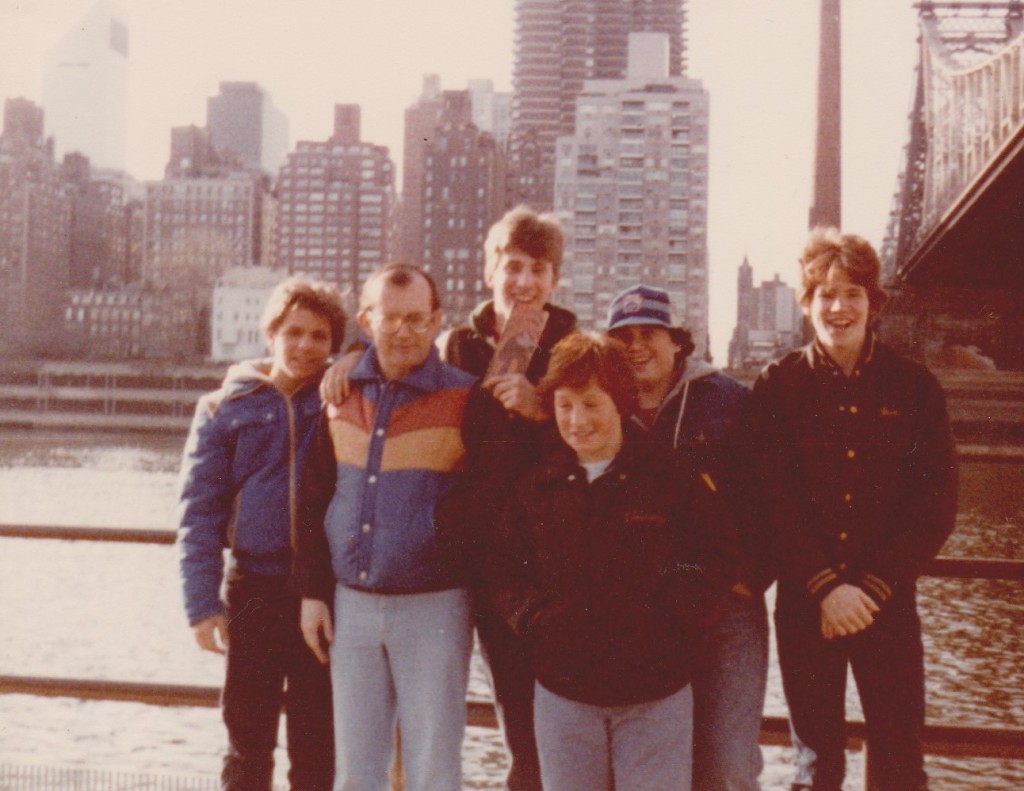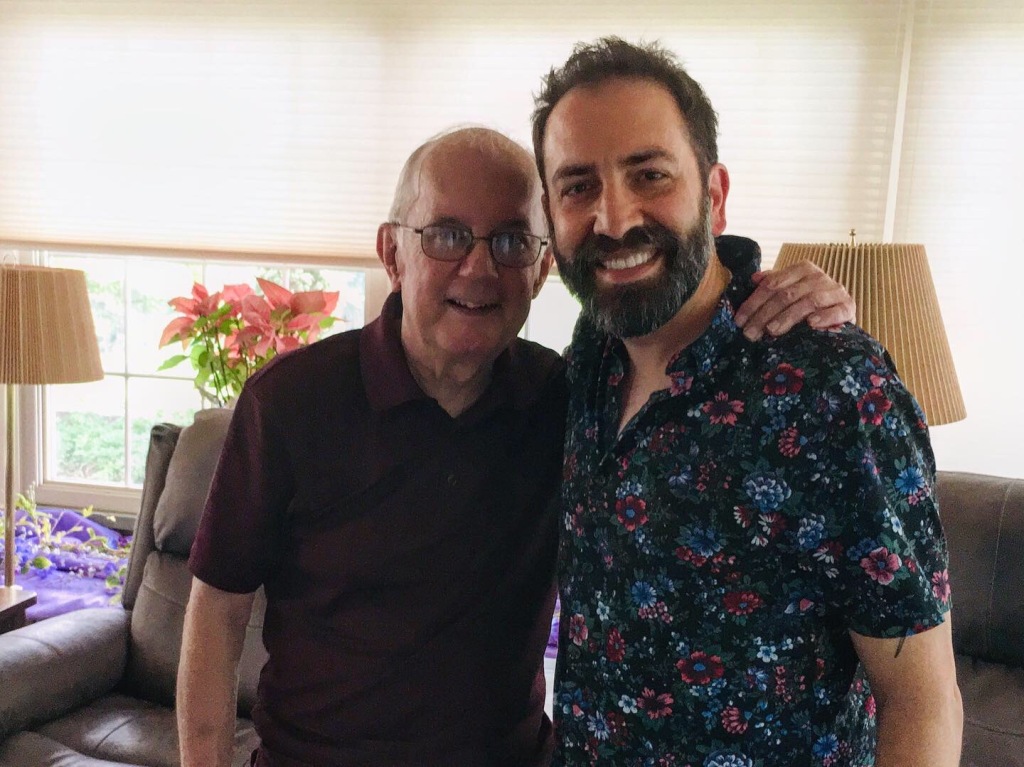FRANCISCO DE GOYA AND BROTHER RAY: ART AND BROTHERHOOD
Francisco de Goya’s painting, Manuel Osorio Manrique de Zuñiga (1784–1792), is best known as “Red Boy,” the one with the boy in the red outfit with a magpie on a leash, wide-eyed cats at his feet and finches in a cage. I discovered it on my first visit to the Metropolitan Museum of Art in New York City when I was about 12-years-old. It’s the first painting I remember falling in love with. I purchased the Bible-thick Met catalog with money I had saved working at my local deli, mostly because Goya’s painting was on the cover.
My chaperone on that trip to the Met was Brother Raymond Murphy of the De LaSalle Christian Brothers order. Brother Ray taught my older brother at Hudson Catholic High School in my hometown of Jersey City, New Jersey, and would often lead cultural tours of New York City for his students. My older brother, in his fraternal wisdom, suggested to Brother Ray that his younger brother would enjoy coming along. And so I did. To the Met, to the Cloisters, to the Brooklyn Bridge, and even the opera at Lincoln Center.

New York City is a world away from anywhere that is not New York City, even if, like me, you lived only a subway ride away. The Italian American author Pietro di Donato, in his novel Three Circles of Light, writes of a short ferry ride across the Hudson River as traveling “from the continent of New Jersey to the continent of New York.” Those trips with Brother Ray opened up that world to me, and made it accessible in a way that my young mind had never considered. I don’t recall at that age, for example, ever being told to look up to acknowledge architecture, or being in the presence of great works of art. The closest I had come to what New York City had to offer was the time my mother took me to see Lassie, the famous collie, on Broadway. I was maybe six-years-old. We got off at the Port Authority Bus Terminal on 8th Avenue and walked up 42nd Street. This was the late 70s and 42nd Street was legendary for its porn shops, strip shows and general seediness. Walking from the bus terminal to the theater, my mother held my hand tight and told me to look straight ahead. When I asked why none of the people on the building marquees and posters had clothes on, she told me they couldn’t afford them.
When Brother Ray wasn’t leading us on tours, he travelled to museums and other cultural sites throughout the country and would send me postcards. I have those postcards to this day.
I followed in my brother’s footsteps and attended Hudson Catholic, but new interests, friends and teachers meant, regrettably, less time for my relationship with Brother Ray. After graduation, I lost complete touch with him. He continued to teach at Hudson Catholic, as far as I knew, and I went to college and work, exploring a career as a journalist, a musician and a bunch of other things, until I settled on being a writer and communications professional. A bulk of that work revolved around the arts: music licensing, film and television, arts administration, and arts and cultural writing. A couple of years ago, I interviewed for what I felt was my dream job: a communications director position at a major museum in Nashville where I live.
I wasn’t thinking about Brother Ray when I walked in the room that day, but a discussion with the museum’s directors about the role the museum plays in the lives of thousands of school children each year struck me. For many of those kids, I was told, it’s the first time they have ever been to a museum. In some cases, it’s the first time many of them have been out of their small towns and in the big city. You can see them get off the bus and look up at the tall buildings. You can feel their awe at being close to historical artifacts and hearing stories from living history characters. I saw myself in the description of those kids. I told my interviewers I understood; that in some ways, I was once like them. I told them about growing up in Jersey City. I told them about Brother Ray. I told them about the opportunities those trips to New York presented to me.
I wanted that job more than ever. When I got it, I knew I had to tell Brother Ray.
Thanks to the internet, I found him at a De LaSalle preparatory school outside of Philadelphia. It had been almost 30 years since we’d been in touch. I was certain he wouldn’t remember me. Still, I thought he might appreciate hearing from a long-lost student who was emailing only to thank him for the positive impact he had on my life.

To my great surprise, he emailed back within a few days. Not only did he remember me, he remembered my brother, and my mother, and my entire family. He remembered specific excursions to New York City we had taken, and was thrilled to discover that I was now working in a museum. He was touched that he had played such a vital role in my life. We exchanged addresses and began a pen pal relationship, him resuming sending me postcards and visitor guides from museums in Philadelphia, and me sending him letters and materials from the state museum, along with new essays I had published. His correspondence arrived in an eloquent cursive like it did all those years ago. It made me embarrassed for the childish all-caps block script my handwriting had become, and so I resolved to write in cursive again, if only in my letters to Brother Ray. He applauded my efforts.
In the summer of 2019, in New Jersey to visit family and spend time on the Jersey Shore, I took a day trip to Philadelphia to see Brother Ray. We caught up with each other’s lives and reminisced about my high school days. We shared thoughts on art, music and books, but also deeper issues, like the role of our fathers in our lives and the many challenges that young men face today. He was happy to discover that my faith was strong, and I was still a practicing Catholic. Over Philly cheese steaks at an Irish pub, we talked of Walker Percy, social action and transcendence. We ended our trip with a visit to one of his favorite local museums, The Woodmere Museum of Art.
In the Age of Coronavirus, Brother Ray and I are still keeping up our handwritten postal mail exchange, though these days there are no postcards or brochures from museums in the envelopes. Mostly we’re writing in notecards and sharing copies of articles we’ve been reading. We’re talking on the phone more, too. Simple calls to check in on each other and our lives in two very different circumstances — he with five other Christian Brothers in their residence in Philadelphia; me with my wife, twin daughters and mother-in-law in our Nashville home.
Manuel Osorio Manrique de Zuñiga, the subject of Francisco de Goya’s painting at The Met, was about four-years old when the boy’s portrait was commissioned by his father. He died only four years later (when, presumably, his birth and death dates were added to the title of the painting). Art historians at The Met have interpreted the seemingly playful images of the caged finches and eager cats in Goya’s painting as “a reminder of the frail boundaries that separate the child’s world from the forces of evil” and “a commentary on the fleeting nature of innocence and youth.”
The forces of evil may circle around us as adults. Innocence and youth may indeed be fleeting. I am not the kid I was when I first met Brother Ray and discovered Goya’s painting. But there are also forces of good around us, and childlike wonderment needn’t be lost. I never forgot the awe I felt visiting museums when I was 12-years-old, or the love of art and culture Brother Ray instilled in me. I’m still in awe, everyday, of the beauty that surrounds me, even if it takes some effort to find it. Reconnecting with Brother Ray reminded me of that, for it’s clear he hasn’t forgotten it either. We both have a stack of recent postcards and letters — his stack written in a beleaguered amateurish cursive — to prove it.
Bio:
Joe Pagetta, a first generation Italian American originally from Jersey City, NJ, is a museum professional, arts writer and personal essayist whose writing has appeared in America: The Jesuit Review, Chapter 16, Wordpeace, and PBS.org. He currently serves as the director of communications at the Tennessee State Museum in Nashville, Tenn.

